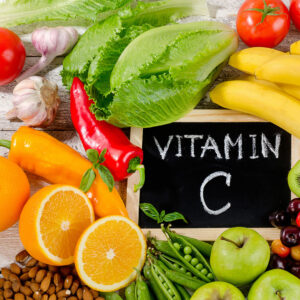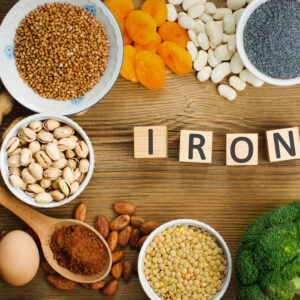Fight Lead Poisoning With a Healthy Diet
 The human body is extremely smart. It could be regarded as the original “smart” technology long before “smart” technology became a thing. It adjusts according to its needs, detects bugs or viruses, and constantly sends messages to the control center of the body – the brain.
The human body is extremely smart. It could be regarded as the original “smart” technology long before “smart” technology became a thing. It adjusts according to its needs, detects bugs or viruses, and constantly sends messages to the control center of the body – the brain.
But, like a computer, it sometimes gets mixed signals.
Human brain development mainly occurs before six years old. A child’s brain grows exponentially during early childhood, taking in all the necessary vitamins and minerals to form a healthy neuromuscular system. A harmful, toxic metal like lead causes a young developing body to think it needs to absorb lead once it enters the bloodstream.
Children exposed to lead early in their developmental stages are at risk for developmental delays, learning disabilities, and overall sickness, which impacts them for life.
Why does the human body think it needs to absorb lead? Shouldn’t it recognize that lead is toxic?
Kevin Hutton, President, and CEO of EAST (Environmental, Asbestos, and Safety Training) Centers of New York, who has over 30 years of experience in the construction and environmental industries, explains why a child’s body absorbs lead into its bones and body tissues. Hutton says, “Children up to six years old use calcium from their diets to build connections in their brains. Lead and calcium are metals that form an ion with a +2 charge. Because of the similarities in lead and calcium, the human body absorbs lead. Lead absorption disrupts neurobiological development by interfering with neuron (brain cell) development. Blood lead levels may decrease with a healthy diet; however, the damage to the brain remains because of the disruption in brain development during a critical growth period.”
A healthy diet may prevent lead poisoning or mitigate the harmful effects of lead exposure. A healthy diet includes increased calcium intake, vitamin C, and iron.
Calcium
 Children with a diet rich in calcium may reduce their risk of lead poisoning and lead absorption and may be able to rid their bodies of lead if exposed.
Children with a diet rich in calcium may reduce their risk of lead poisoning and lead absorption and may be able to rid their bodies of lead if exposed.
Calcium is a primary component of bones and plays a significant role in removing lead from the blood through a natural purging and recycling process called “remodeling.” Remodeling is when calcium ions leave dying bone cells, circulate in the blood, and refresh calcium ions in bones. Harmful lead ions will excrete from the body if lead is in the bones, and new calcium ions will absorb into the bones.
That is, if a child has an adequate and steady calcium diet.
Calcium requirements vary by age, increasing as children get older. Kids ages 1 to 3 need 700 mg of calcium a day (2–3 servings), while kids 4 to 8 need 1,000 mg of calcium a day (2–3 servings).
Dietary factors such as nutritional needs (allergies, intolerances), food culture, and geographical location dictate calcium intake; however, here are some general suggestions for families looking to boost calcium consumption.
- Cheese
- Yogurt
- Cow’s Milk, Goat’s Milk, Almond Milk
- Cottage Cheese
- Beans (pinto, garbanzo)
- Edamame Beans
- Tofu
- Green Leafy Vegetables (kale, spinach)
- Broccoli
- Brussel Sprouts
- Kiwi
- Oranges
- Flour Tortilla
- Fortified Cereals
Vitamin C
 Vitamin C is essential for maintaining healthy blood vessels, teeth, bones, and cartilage. It also has metal-binding properties that may fight lead poisoning. This immune-boosting, water-soluble vitamin, readily available worldwide, has consistently been shown to support lead excretion from the blood.
Vitamin C is essential for maintaining healthy blood vessels, teeth, bones, and cartilage. It also has metal-binding properties that may fight lead poisoning. This immune-boosting, water-soluble vitamin, readily available worldwide, has consistently been shown to support lead excretion from the blood.
A powerful antioxidant, Vitamin-C fights for healthy bodily functions on a cellular level, defending against free radicals (molecules produced when cells are exposed to environmental toxins or chemicals).
Vitamin C deficiency is rare, but it is vital to ensure adequate intake if lead exposure is suspected. Recommended daily Vitamin-C intake ranges between 35 and 75 mg/d depending on age.
Fruits and vegetables are primary sources of this supernutrient, but some foods high in Vitamin C may be surprising.
Some powerful, Vitamin C packed foods are as follows:
- Tomatoes
- Spinach
- Brussel Sprouts
- Bell Peppers
- Cauliflower
- White Potatoes
- Papaya
- Fortified Orange Juice
Iron
 Iron is vital in fighting lead poisoning and reducing blood lead levels in young children. Iron assists in the production of hemoglobin, a protein in red blood cells that transports oxygen-rich blood to cells in the body.
Iron is vital in fighting lead poisoning and reducing blood lead levels in young children. Iron assists in the production of hemoglobin, a protein in red blood cells that transports oxygen-rich blood to cells in the body.
This essential mineral is found naturally in foods and is added as a nutrient to fortified foods.
Iron from food comes in two forms, heme, and non-heme. Heme is found only in animal flesh like meat, poultry, and seafood. Non-heme iron is found in plant foods like whole grains, nuts, seeds, legumes, and leafy greens. Non-heme iron is also found in animal flesh, as animals consume plant foods with non-heme iron.
Iron is stored in the body as ferritin (in the liver, spleen, muscle tissue, and bone marrow) and is delivered throughout the body by transferrin (a protein in blood that binds to iron). Lead and iron bind to this transport protein which absorbs the metals into the bloodstream. If children are deficient in iron, or anemic, the transporter protein increases activity, carrying lead through the body instead.
There is evidence that higher dietary iron intake is associated with lower blood lead among urban preschool-age children. For example, a team of researchers led by ETH professor Michael B. Zimmermann from the Laboratory of Human Nutrition has shown in a study that fortifying food with iron produces a striking reduction in blood lead concentration in children exposed to high levels of the metal.
The Mayo Clinic recommends different amounts of iron at different ages.
Children 7 – 12 months old should consume 11 mg, 1 – 3 years old should consume 7 mg, and 4 – 8 years old should aim for 10 mg daily.
Here are some high-iron, kid-friendly foods that help fight lead poisoning:
- Dark Poultry Meat
- Lean Meats
- Fortified Cereal
- Oatmeal
- Lentils
- Beans
- Peas (some kids actually eat peas)
- Potatoes
- Leafy Greens (for the occasional salad connoisseur)
- Raisins
- Coconut Milk
- Nuts
- Tofu
- Eggs
Signs of Lead Poisoning in Kids
Lead poisoning symptoms present in children the same way viruses do, which is why lead poisoning is often misdiagnosed. When blood levels are incredibly high, children may exhibit the following symptoms:
- Headache
- Stomachache
- Nausea
- Irritability
- Fatigue
The health effects of lead exposure are long-lasting and may induce severe damage to body systems.
Lead damage can cause:
- Lower Intellectual Functioning (lower IQ)
- Brain Damage
- Liver and Kidney damage
- Learning Disabilities
Who To Contact About Lead
 Lead is a health concern when accumulations of toxic dust occur. If not identified, it can cause physical and mental damage to children and adults.
Lead is a health concern when accumulations of toxic dust occur. If not identified, it can cause physical and mental damage to children and adults.
If a child has been exposed to lead or exhibits unusual symptoms, contact a trusted pediatrician immediately for a blood test.
The best way to determine if lead is the problem is to have a lead-risk assessment or lead paint inspection on a property. Surfaces only need to be inspected once by a professional to draft a cost-effective way to eliminate or control issues.
AMD Environmental specializes in testing techniques to identify all lead-based surface coatings in a home. Our professionals have guided numerous home buyers and commercial property owners through the process to help them make informed decisions in the most cost-effective way possible.
If lead is suspected, contact AMD Environmental, professionals committed to being part of the solution in the fight against lead poisoning.
Click here for more information about lead exposure.
Reference:
Martini L, Pecoraro L, Salvottini C, Piacentini G, Atkinson R, Pietrobelli A. Appropriate and inappropriate vitamin supplementation in children. J Nutr Sci. 2020 Jun 5;9:e20. doi: 10.1017/jns.2020.12. PMID: 32577225; PMCID: PMC7288613.

